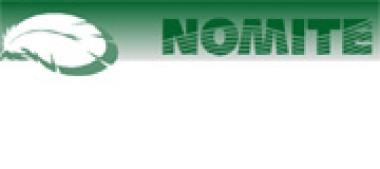What does NOMITE stand for?

Bedding articles which carry the NOMITE label are suitable for house-dust-mite allergy sufferers.
Scientific research on bedding articles filled with down and feathers shows that the down- and feather-fillings were virtually mite-free.
In 1992, Prof. Dr. Dr. Hans Jürgens, director of the Institute for Industrial Anthropology at the Kiel University, carried out a survey which included 700 field tests. He researched to which degree down- and feather-filled bedding articles were infested with house-dust-mites.
Jürgens found out the following:
He could not detect any mite populations at all in new pillows and duvets; the used bedding articles he included in the tests displayed a very low infestation rate.
Out of the 192 samples collected from used pillows, the testing on 78 % resulted completely negative regarding the mite allergen concentration. The remaining 22 % of test specimens displayed mite concentrations so low that they qualified to be harmless to health from an allergological point of view (less than 10 mites per 0.1 g of dust).
Even the additional testing carried out on a selection of 41 particularly soiled bedding articles, which had not been cleaned for at least 15 years – and in many cases even for a much longer time – confirmed these results. Although some of the samples were mite-infested, their allergen contents proved to be harmless to health, as well.
Another test revealed that the tightly woven ticking fabric which encases the down- and feather-filled pillows and duvets further reduces the mites’ already low tendency to migrate and settle in new habitats. From the same test it emerged that the ticking fabric provides an additional barrier against the mite infestation of bedding articles.
Another test revealed that the tightly woven ticking fabric which encases the down- and feather-filled pillows and duvets further reduces the mites’ already low tendency to migrate and settle in new habitats. From the same test it emerged that the ticking fabric provides an additional barrier against the mite infestation of bedding articles.
H. W. Jürgens, Ökologische Untersuchungen zu Hausstaubmilben (1992), Der Kinderarzt 23, 1884-1889
These testing results can be attributed to two fundamental reasons:
- The down-proof tickings which cover a pillow or a duvet act as a proper “barrier” to mites. The shells are very tightly woven in order to prevent down and feathers from leaking out. Neither house-dust-mites or nor human skin scales, on which the mites feed, can pass through the ticking fabric.
- In addition, the thermal and climatic conditions in down- and feather-filled pillows and duvets are highly unfavourable to mites, which depend on humidity to survive. The quick creation of warmth in one’s sleep and the quick reduction of humidity when the bedding is aired make for an environment which is detrimental to mites..
The temperatures in down- and feather-filled duvets rise very fast above the value where mites thrive. When you tuck yourself in, it gets too hot for the mites. In the following stage the humidity which was absorbed by the duvet will quickly be released, due to the favourable climate dynamics of the filling. As a result the humidity level drops swiftly below the critical value where mites comfortably survive: it gets too dry for the mites.
H. W. Jürgens, Ökologische Untersuchungen zu Hausstaubmilben (1992), Der Kinderarzt 23, 1884-1889
www.nomite.de/juerg_de.htm
The German magazine ÖKO-TEST states on the topic: “Mites do not like these variations in temperature. They prefer constant temperatures, such as the ones you would find in synthetic bedding articles. The precondition for this, however, is that the down and feathers are properly treated. They are therefore washed with a sort of curd soap, then spun and dried at a temperature over 100 oC (212 oF) before they are filled into the shells.“
The results of this study have in the meantime been confirmed by further surveys. By now the Medical Association of German Allergologists (Ärzteverband Deutscher Allergologen e. V., ÄDA) recommends the following: “Contrary to what has so far been recommended, synthetic bedding is not favourable, it is preferable to use natural materials, such as down and feathers.“ With this statement the Medical Association refers to the guideline on Allergy prevention by the German Allergy Prevention Action Alliance (Aktionsbündnis Allergieprävention) issued in 2004.
Borowski, C., Schäfer, T., Allergieprävention. Evidenzbasierte und konsentierte Leitlinie. München 2005
Further information on the Internet:
- www.nomite.de
- www.oekotest.de/cgi/vb/vbgs.cgi?suchtext=&frage=100129
- www.aeda.de/pressinf/03-2005/02/htm











